Hubert Candilario San Felipe Native American Pottery Holey pot
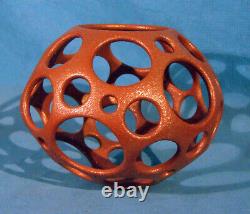
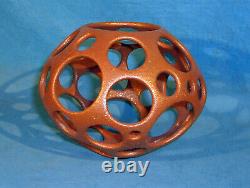
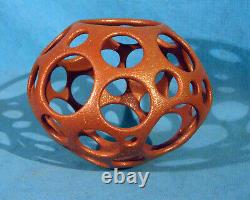

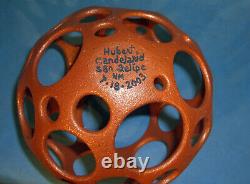
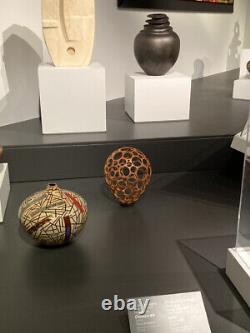

It takes someone like Hubert, with a degree in architectural design and drafting and that has an appreciation for structure and pure architectural form, to come up with the designs like his "holey" pots. Hubert is from San Felipe Pueblo, a pueblo with few active potters, and developed a unique form of pots. Hubert was self taught, but has been inspired by Maria Martinez and Nancy Youngblood. Many of his pots have a unique "architectural" form, but his "holey space pots" are the most dramatic. According Hubert, the holes are like nature; they are the structure of cells.
He first forms the pot by using a traditional method of coiling clay from a bowl base. After letting the clay dry to leather hardness, he uses a circular template to draw circles and then carves the holes using a X-Acto knife. Hubert then applies a micaceous slip, usually found at Nambe or Picuris pueblos.
Burnishing the pot between applications before firing. Given the distance between holes, it's amazing that the pots hold together. This pot is 5 1/2 inches wide x 4 inches high with more than 30 "holes". It is in mint condition. Note that the last photo shows one of Hubert's "holey space pots" on exhibit at the Denver Art Museum.
